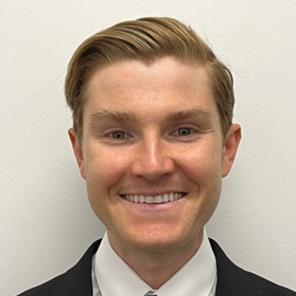
David Cruz Walma is an orthodontic resident pursuing a DMSc degree in the Department of Orthodontics at Harvard School of Dental Medicine. He received his DPhil (PhD) degree from the University of Oxford and his dental degree from the University of Alabama at Birmingham School of Dentistry. He is also a Medical Research Scholars Program alumnus. As a DMSc resident, Cruz Walma is provided with the unique opportunity to continue developing as a clinician-scientist, completing postdoctoral research while pursuing clinical residency training in Orthodontics. He is studying under the mentorship of Dr. Sercan Akyalcin and Dr. Andre Weissheimer (Department of Orthodontics) as well as Professor David Mooney (School of Engineering), and has received several clinical, research, and leadership awards as well as mentoring recognitions and is passionate about teaching.
Please briefly describe your background and research interests.
My research focuses on characterizing immune system plasticity in response to extracellular matrix cues and how such interactions drive craniofacial development as well as disease. As a DMSc student at HSDM, I have developed a project involving a collaboration between Harvard and the University of Oxford that investigates how the extracellular matrix guides T cell development. At Harvard School of Dental Medicine, I have received continuous support and encouragement to take advantage of the university’s well-founded network and resources for innovation and cutting-edge research. As a clinician-scientist, I am also interested in developing AI-driven dental technologies and advancing my specialty.
How did you first learn about AADOCR and what motivated you to join?
I was introduced to the AADOCR and its mission as an undergraduate student at the University of Alabama at Birmingham. The appeal of a central platform to promote interactions between researchers focused on dental, oral, and craniofacial health from diverse backgrounds and geographical locations led me to join the AADOCR.
What has been the most valuable benefit of AADOCR membership to you?
Membership in professional organizations such as the AADOCR offers researchers several mechanisms to share their ideas and research works. Members can share their work and interact with other experts through annual meetings, local chapter events, and research journals.
Are you going to next year’s AADOCR Annual Meeting in New York? If so, which parts are you most looking forward to?
Yes, I am planning to attend. I’m looking forward to receiving updates from my colleagues and their exciting research endeavors as well as making new friends and contacts similarly focused on a career promoting craniofacial health. It will be an excellent opportunity to network with colleagues similarly interested in developing careers as clinician-scientists.
What is the best way for other members to become more involved in AADOCR and get the most out of the membership?
Being involved in the annual meetings and participating in local chapter events, such as the local chapter of the National Student Research Group or Scientific group is an efficient and rewarding way for members to make the most out of their AADOCR membership.




